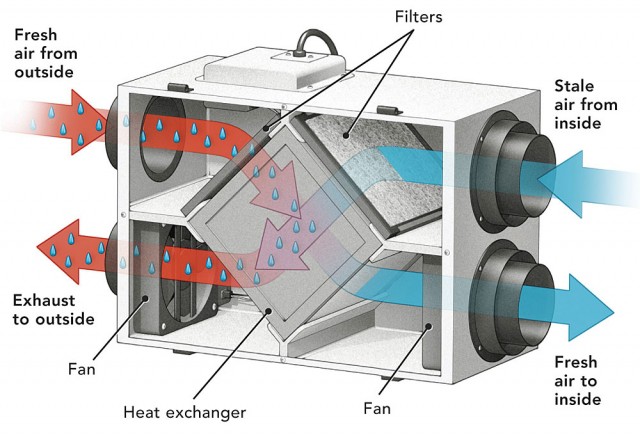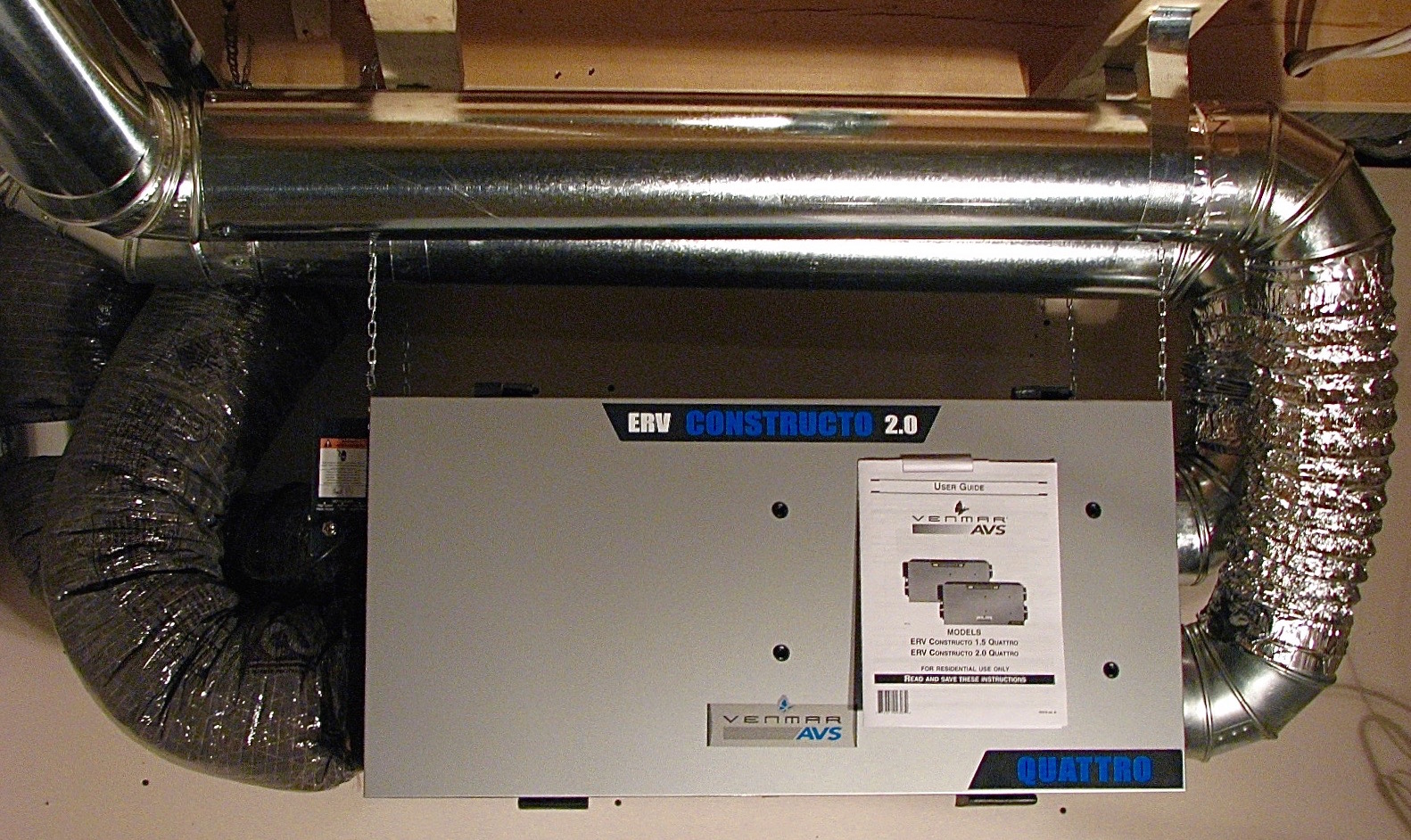Unveiling the Trick Perks and Uses of Heat Recovery Ventilation in Lasting Layout
Heat Recovery Ventilation (HRV) systems play a vital function in lasting layout. They help with a continual exchange of stagnant indoor air with fresh outdoor air, substantially improving indoor air high quality. Additionally, HRVs contribute to energy efficiency by reclaiming warm from exhausted air, which can reduce energy costs. Comprehending the diverse advantages and applications of HRVs reveals their value in modern style. What various other advantages do these systems supply in the search of sustainability?
Understanding Heat Recovery Ventilation Equipments
Heat recovery ventilation (HRV) systems are made to improve interior air high quality while lessening power loss. These systems use a mechanical air flow method to exchange stagnant interior air with fresh outdoor air, making certain a continuous supply of tidy air. By catching warmth from the exhaust air, HRVs precondition incoming air, minimizing the need on heating and cooling down systems. This process not only improves thermal comfort yet also adds to energy performance in residential and business structures. In addition, HRV systems help regulate humidity degrees and decrease interior contaminants, promoting a much healthier living setting. Their critical application is vital for achieving sustainable layout objectives, as they offer an equilibrium in between power preservation and occupant health.
Just How HRV Solution Job
While lots of may know with ventilation systems, understanding exactly how warmth healing ventilation (HRV) systems operate is crucial for appreciating their benefits. HRV systems function by trading stale interior air with fresh exterior air while moving warmth in between the 2 streams. This procedure occurs in a warmth exchanger, where heat from the outgoing air warms the inbound air throughout colder months, minimizing energy loss. Alternatively, in warmer months, the system can cool incoming air utilizing the cooler outgoing air. HRVs are outfitted with fans to facilitate air flow and filters to eliminate particulates, making sure a continual, balanced ventilation process. This cutting-edge style not only enhances power performance yet additionally contributes to keeping a comfortable interior setting.
Enhancing Indoor Air High Quality
Interior air top quality can significantly influence wellness and health, making reliable air flow important in modern homes. Heat Recovery Ventilation (HRV) systems play an important function in preserving indoor air top quality by continuously exchanging stagnant indoor air with fresh outdoor air. This process not only lowers air-borne pollutants however also minimizes moisture degrees, which can lead to mold development and respiratory system issues. HRV systems filter inbound air, eliminating irritants and particulates, thereby giving a healthier living atmosphere. Additionally, these systems help get rid of odors and unstable organic substances (VOCs) typically located in family items. By making certain a regular flow of clean air, HRV systems add to a general better interior ambience, advertising comfort and wellness for passengers.
Power Efficiency and Cost Cost Savings
Power efficiency sticks out as a considerable benefit of Heat Recovery Ventilation (HRV) systems. By catching and reusing the warm from worn down indoor air, HRVs minimize the energy required for heating incoming fresh air, leading to decreased energy intake. This performance converts into reduced utility costs, supplying significant price financial savings for property owners and services alike. In addition, HRV systems typically get approved for power effectiveness rewards and refunds, further enhancing their financial allure. In time, the preliminary financial investment in HRV technology can cause a favorable return on investment through reduced energy costs. The combination of HRV systems not only promotes sustainable design yet additionally supplies a functional remedy for attaining lasting energy cost savings and financial benefits.
Ecological Advantages of HRV

A wide range of environmental advantages emerges from the execution of Heat Recovery Ventilation (HRV) systems. By successfully transferring warm from exhaust air to incoming fresh air, HRVs considerably reduce the energy needed for home heating and cooling spaces. This power effectiveness equates to lower greenhouse gas discharges, contributing to a decline in the general carbon footprint of structures. Furthermore, HRV systems improve interior air quality by continually circulating fresh air, therefore lowering the concentration of indoor toxins and irritants. The decrease in power consumption help in conserving all-natural resources, making HRVs a crucial part of sustainable style. Generally, the ecological advantages of HRVs play a crucial role in promoting a much healthier earth and fostering green structure practices.
Versatile Applications in Modern Architecture
Heat recovery ventilation (HRV) systems are significantly being integrated into both property and business building projects. In property settings, HRVs enhance indoor air top quality while making the most of energy efficiency. In business spaces, these systems enhance air flow techniques, showing their convenience in modern architectural applications.
Residential Projects Combination
While modern-day style increasingly stresses sustainability, the integration of warm healing air flow systems in household projects has become a functional option for boosting indoor air top quality and energy efficiency. These systems efficiently transfer warm from exhaust air to incoming fresh air, reducing power loss and minimizing home heating or cooling demands. In new builds and retrofits alike, heat recuperation air flow can be effortlessly included, supplying home owners with a much healthier living setting while decreasing energy expenses. In addition, with raising recognition of ecological effects, more architects and contractors are recognizing the long-term advantages of these systems. Because of this, warmth healing ventilation has come to be a crucial part of lasting domestic style, showcasing flexibility and commitment to environment-friendly practices.
Business Areas Optimization
As contemporary business spaces develop to fulfill the demands of sustainability and efficiency, the execution of warm healing air flow systems emerges as an essential method for optimizing interior settings. These systems help with the exchange of stagnant indoor air with fresh outdoor air while reclaiming heat, useful source considerably decreasing power consumption. This not just enhances convenience for owners yet also aids in lowering functional prices. Versatile applications can be observed in workplaces, retail rooms, and academic institutions, where air high quality and temperature control are vital. Additionally, incorporating heat healing air flow aligns with eco-friendly building accreditations, better promoting environmental obligation. Inevitably, adopting such systems in industrial architecture not only adds to sustainability goals but also cultivates healthier, much more efficient rooms for users.
Incorporating HRV Into Sustainable Style Practices
Incorporating heat recovery ventilation (HRV) systems right into sustainable design practices supplies significant benefits in power performance and interior air top quality. By using HRV, developers can produce cost-effective solutions that not just lower energy consumption but also boost the total convenience of interior atmospheres. This alignment with sustainability goals placements HRV as an essential component in modern-day building techniques.
Energy Efficiency Improvement
By integrating heat recovery ventilation (HRV) systems into lasting layout techniques, engineers and home builders can significantly enhance power efficiency in modern-day buildings. HRV systems function by recording warm from outbound stagnant air and moving it to inbound fresh air, lessening the power needed for home heating or cooling indoor rooms. This process not just minimizes reliance on conventional HVAC systems but likewise decreases general power intake. Furthermore, HRV systems can help maintain a consistent indoor temperature, lowering peak power demands. By incorporating these systems, structures can achieve significant decreases in energy costs and carbon footprints, lining up with sustainability objectives. Inevitably, HRV modern technology stands for a practical remedy for improving power performance in the developed atmosphere, promoting even more responsible resource usage.
Indoor Air Quality Enhancement
Just how can warm recovery ventilation (HRV) systems contribute to premium interior air top quality in modern structures? HRV systems successfully exchange stagnant interior air with fresh outdoor air while recuperating warm power, minimizing temperature level variations. This procedure minimizes the focus of interior toxins, such as volatile organic substances (VOCs), irritants, and wetness, which can degrade air top quality and impact resident health and wellness. By preserving excellent humidity levels and making certain a constant supply of tidy air, HRVs help create a much healthier interior setting. On top of that, these systems can be integrated into sustainable layout practices, promoting power effectiveness together with enhanced air quality. HRV Heat Recovery Ventilation. HRV technology plays an essential duty in advancing total resident comfort and health in modern architectural styles.
Affordable Style Solutions

Regularly Asked Inquiries
What Upkeep Is Needed for Heat Recovery Ventilation Systems?

Upkeep for heat recuperation ventilation systems normally involves routine filter substitutes, cleansing of heat exchangers, inspection of followers and air ducts, and making sure correct water drainage. These tasks help preserve efficiency and extend the system's life expectancy over time.
Can HRV Equipments Be Mounted in Existing Structures?
Heat recovery ventilation systems can without a doubt be installed in existing structures. HRV Heat Recovery Ventilation. Retrofitting requires mindful preparation and evaluation of the structure's design, making certain compatibility with present systems while making the most of energy effectiveness and indoor air high quality
How Do HRV Equipment Impact Sound Degrees Inside?
HRV systems can influence interior noise levels by presenting audio from exterior resources via air flow. Nonetheless, top notch setups frequently incorporate sound-dampening attributes, lessening sound impact while providing effective air exchange and keeping comfort indoors.
Exist Any Disadvantages to Utilizing HRV Solutions?
The disadvantages of utilizing HRV systems consist of prospective high initial prices, upkeep difficulties, and the opportunity of reduced indoor air top quality if filters are not frequently altered, which can cause issues with humidity degrees.
Exactly how Do I Choose the Right HRV System for My Needs?
Choosing the best heat healing air flow system involves assessing particular demands, such as click for more info constructing size, environment, and power effectiveness objectives. Additionally, assessing system functions, installment needs, and upkeep considerations is necessary for peak performance and satisfaction.